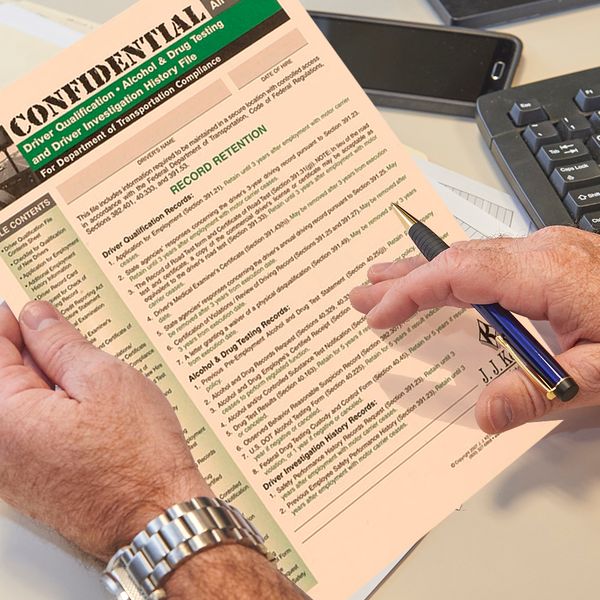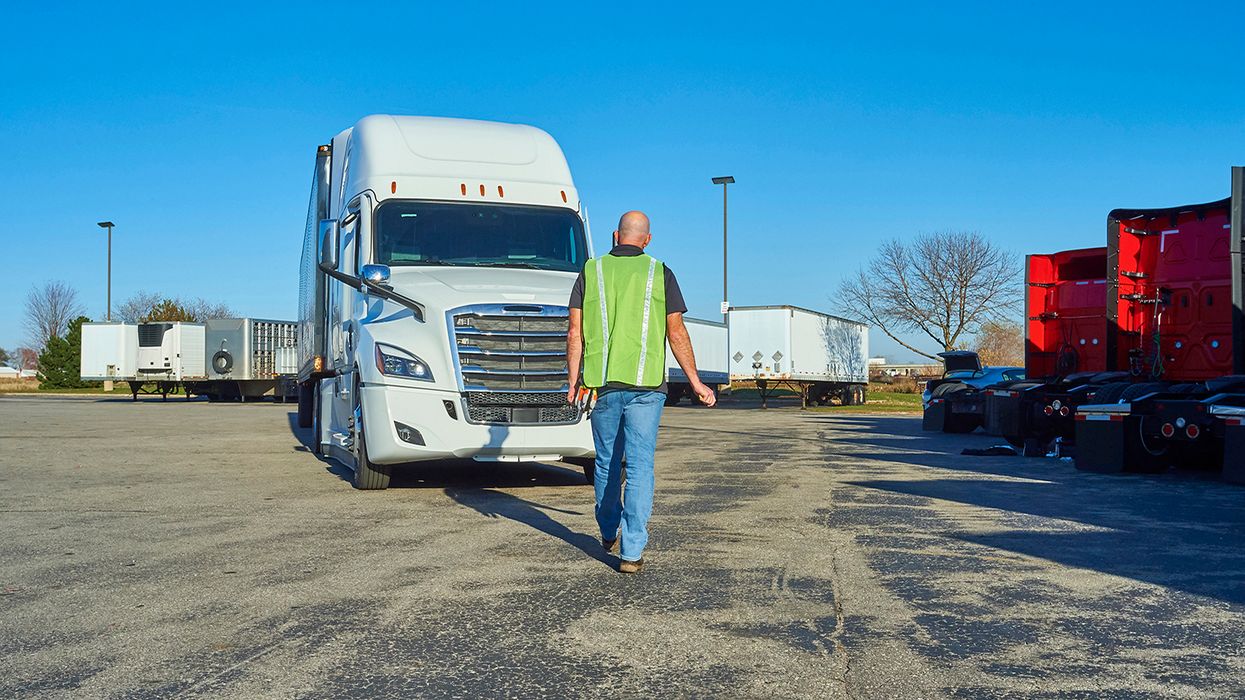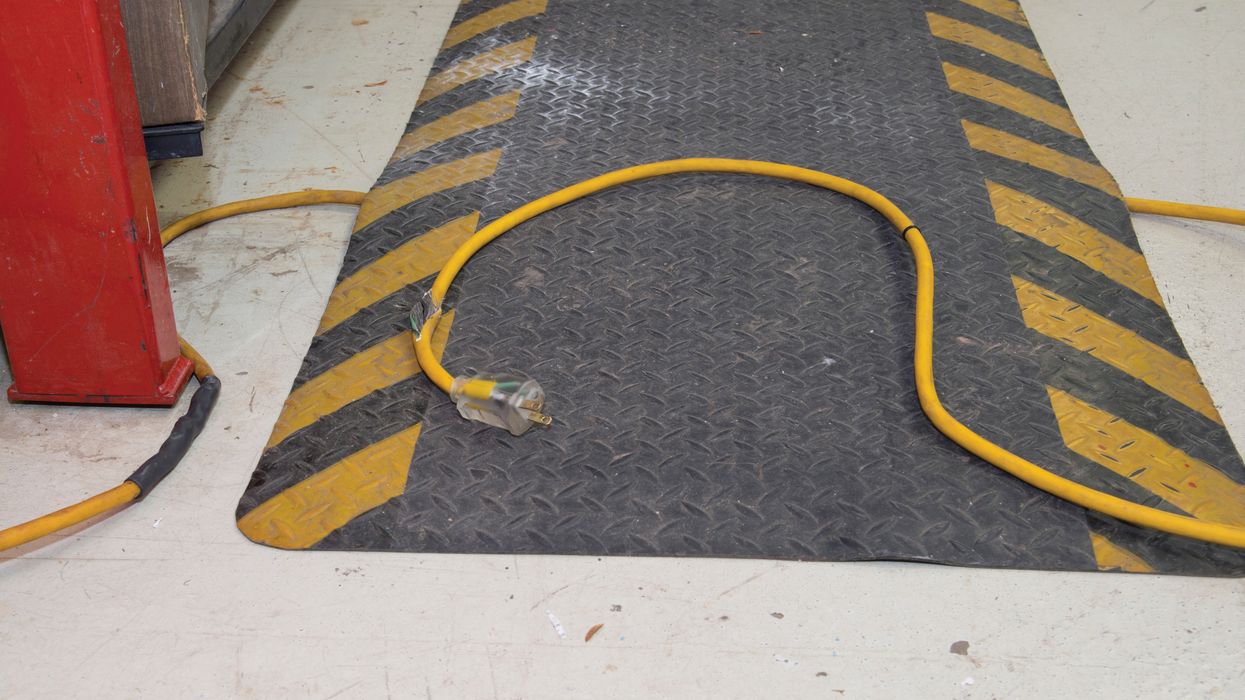Temporary driver DQ files - Exceptions exist, but with watchouts
Qualified drivers are in short supply. Utilizing drivers from staffing services (temp agencies) and on loan from other carriers are alternatives to recruiting and hiring company drivers. Often, there is a need to find drivers to cover for a short surge in business, and creating driver qualification (DQ) files is time-intensive.
However, driver qualification files that are compliant with Part 391 are necessary to verify that the drivers operating your commercial motor vehicles (CMV) are safe. There are two exceptions to the complete DQ file requirements, which are:
This article covers basic DQ requirements at the time of hire under Part 391, the two DQ file exceptions, and associated watchouts.
Driver qualification basics
Per 390.5, anyone who operates a CMV in interstate commerce on a “highway” or any area open to the public is a “driver.” All drivers must be fully qualified under the Federal Motor Carrier Safety Regulations (FMCSRs) by the carrier using the driver, regardless of who pays the driver, unless an exception applies. Drivers include, but are not limited to, CMV operators who are:
- Full-time,
- Seasonal or intermittent,
- Loaned by another carrier or from a staffing service,
- Leased owner-operators, or
- Mechanics who test-drive CMVs.
A DQ file at the time of hire must have the following documents per 391.51:
- Driver application,
- Road test certificate or copy of a commercial driver’s license (CDL),
- Initial motor vehicle records (MVRs)*,
- Proof of medical certification (and any exemptions), and
- Verification of the medical examiner’s National Registry listing.
*Initial MVRs from all states where the driver held a vehicle operator’s license within the past three years.
A driver investigation file, or safety performance history, per 391.23 must contain verification of the following within 30 days of the hire date from Department of Transportation (DOT)-regulated employers in the past three years:
- Dates of employment;
- DOT accidents, as defined in 390.5, and any other incidents that an employer wishes to share; and
- DOT drug and alcohol testing violations for drivers of vehicles requiring a CDL.
391.63 Multiple-employer drivers
The multiple-employer exception can be used if a motor carrier uses a driver from a staffing service who is:
- Fully qualified by a carrier, and
- In any period of seven consecutive days, is used as a driver by more than one motor carrier.
Under 391.63, the carrier need not:
- Require a DOT employment application per 391.21;
- Make investigations and inquiries, except CDL drivers, must have DOT drug and alcohol background checks per 382.413 and 40.25(b);
- Perform the annual driving record inquiry per 391.25(a); or
- Perform the annual review of the person’s driving record per 391.25(b).
However, before a temp-agency driver operates a CMV, the carrier must obtain and keep for employment plus three years:
- The driver’s name and Social Security number;
- The driver’s license number, type of license, and issuing authority;
- Medical certificate for non-CDL drivers and proof that the certified medical examiner (CME) was on the National Registry; and
- For CDL-vehicle drivers, the carrier must obtain:
- CDLIS MVR as proof of medical certification after 15 days from the last DOT exam (med card is only allowed as proof in the 15 days after the exam), and the note that the examiner was on the National Registry;
- Confirmation from the driver whether they failed or refused a DOT pre-employment drug test and did not obtain employment in the past two years per 40.25(j); and
- The prior ten years of regulated CDL-vehicle driving employment history per 383.35(c).
Watch-out: FMCSA guidance below gives carriers the option to allow drivers to remain in the temp agency’s DOT testing program under certain conditions. The driver does not have be a multi-employer driver, in other words, does not have to work for two carriers in 7 days to remain in a temp agency’s DOT testing program.
FMCSA guidance regarding the use of a temp agency’s DOT drug and alcohol testing programs is as follows:
- The driver must be in the carrier’s DOT drug and alcohol program unless, at the time of assignment to work for the carrier, the driver is expected to work for the carrier for less than 30 consecutive days.
- If expected to work for the carrier for less than 30 consecutive days, the driver can remain in the temp agency’s compliant DOT drug and alcohol testing program if one exists.
- If the driver is expected to work for the carrier for more than 30 days, the driver must be in the carrier’s DOT drug and alcohol testing program.
Watch-out: FMCSA has not been clear on whether they require a pre-employment query when the driver remains in the temp agency’s DOT program. To be sure the driver isn’t prohibited, run the query.
Best practice is to include a temp driver in the carrier’s DOT testing program even if expected to work for the carrier for less than 30 consecutive days.
391.65 Drivers furnished by other motor carriers
If a secondary carrier employs a driver who is fully qualified by a primary carrier and works for at least two carriers in sevendays, the primary carrier can provide a certificate or written statement that:
- Is signed and dated by an officer or authorized employee of the primary carrier that employs the single-employer driver; • Contains the driver’s name and signature;
- Certifies that the driver is employed as a single-employer driver and is fully qualified to operate a CMV under Part 391;
- States the medical examiner’s certificate expiration date;
- Is substantially following the form in 391.65(a)(2)(vii); and
- Must be retained by the second carrier for three years from the end of driving employment with the second carrier.
Watch-out: The certificate issued under 391.65 is not valid after the driver leaves the primary carrier, if the medical certificate expires, or for any other reason the driver is no longer qualified.
The exception does not cover the Part 382 DOT drug and alcohol requirements. For CDL-vehicle drivers, the secondary carrier must:
- Conduct DOT drug and alcohol background checks per 382.413 and 40.25(b);
- Confirm whether the driver failed or refused a DOT pre-employment drug test and did not obtain employment in the past two years per 40.25(j);
- Obtain the prior ten years of regulated CDL-vehicle driving employment history per 383.35(c);
- Include the driver in the DOT random drug and alcohol testing pool even if using the pre-employment testing exception in 382.301(b) and (c);
- Increase DOT random pulls to account for average additional temp driver(s), and
- Run a pre-employment query.
Watch-out: If a driver works for only one DOT number in any period of seven consecutive days, they are not a “multi-employer driver” as defined in 390.5. The driver must be fully qualified by the carrier using the driver, even if the companies are sister companies with different DOT numbers.
Other regulations that apply when using drivers under both exceptions:
- Part 383 CDL Licensing. Driver must have an active CDL with endorsements for the vehicle(s) operated;
- Part 392 Driving of Motor Vehicles and Part 395 Hours-of-Service (HOS). Comply with applicable regulations and have HOS records under both carriers; and
- Part 393 Parts and Accessories and Part 396 Maintenance and Inspections. Conduct pre-trip and post-trip inspections on each vehicle and fill out DVIRs if a defect is found.
In summary
As a best practice, a carrier may choose to fully qualify each driver to reduce potential risk and compliance issues. Although taking these extra steps takes time and creates more work for carriers, it may pay off in the end.
Keys to remember: A “multi-employer driver” is a driver who works for at least two carrier DOT numbers in each seven-day period and is fully qualified by at least one carrier. Regardless of who pays the driver, the carrier using the driver is accountable for compliance, even when an exception may apply.
































































